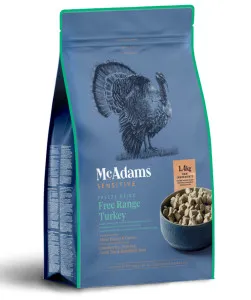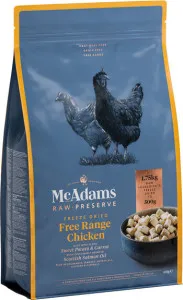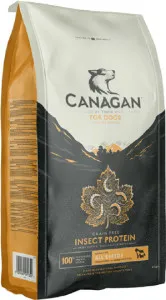Dry Dog Food 101: Mastering the ABCs for a Healthy Canine
Choosing the right dry dog food can be overwhelming with so many brands, ingredients, and nutritional claims on the market. But don’t worry—this guide breaks down everything you need to know to make an informed decision for your furry friend. Whether you're a new pet parent or looking to refine your dog’s diet, understanding the basics of dry kibble is key to keeping your pup happy and healthy.
Why Choose Dry Dog Food?
Dry dog food, or kibble, is a popular choice for pet owners due to its convenience, affordability, and long shelf life. But beyond practicality, high-quality dry food offers balanced nutrition when formulated correctly. Here’s why many dog owners prefer it:
- Dental Health Benefits: The crunchy texture helps reduce plaque buildup.
- Easy Storage: Unlike wet food, kibble doesn’t require refrigeration.
- Cost-Effective: Generally more affordable than wet or fresh food options.
- Portion Control: Measuring servings is simple, helping maintain a healthy weight.
- Real Meat as the First Ingredient: Look for chicken, beef, lamb, or fish—avoid vague terms like "meat meal."
- Whole Grains or Grain-Free Alternatives: Brown rice, oats, or sweet potatoes provide digestible carbs.
- Healthy Fats: Omega-3 and omega-6 fatty acids from sources like salmon oil or flaxseed support skin and coat health.
- Natural Preservatives: Vitamin E (mixed tocopherols) is safer than artificial preservatives like BHA or BHT.
- Artificial Colors & Flavors: These are unnecessary and may cause allergies.
- By-Products: Low-quality protein sources like "chicken by-product meal."
- Excessive Fillers: Corn, wheat, and soy are common allergens and offer minimal nutrition.
- Sugar or Sweeteners: Added sugars contribute to obesity and dental issues.
- High-quality animal protein (at least 22-32% protein content).
- DHA for brain development (often found in fish-based formulas).
- Smaller kibble size for easy chewing.
- Moderate protein (18-25%) unless your dog is highly active.
- Joint-supporting ingredients like glucosamine for larger breeds.
- Reduced fat to prevent weight gain.
- Added fiber for digestive health.
- Joint supplements like chondroitin.
- Grain-Free: Ideal for dogs with grain allergies, but ensure it’s not overly reliant on legumes.
- Limited Ingredient: Helps identify food sensitivities by minimizing ingredients.
- Weight Management: Lower-calorie formulas with added fiber to promote fullness.
- Hypoallergenic: Uses hydrolyzed proteins to reduce allergic reactions.
- Days 1-2: 25% new food, 75% old food.
- Days 3-4: 50% new food, 50% old food.
- Days 5-7: 75% new food, 25% old food.
- Day 8+: 100% new food.
- Myth: Grain-Free is Always Better. Unless your dog has a grain allergy, whole grains can be a healthy part of their diet.
- Myth: Kibble Causes Dehydration. Dogs on dry food drink more water naturally—just ensure fresh water is always available.
- Myth: Expensive = Healthier. Price isn’t always an indicator of quality. Check ingredients instead.
- Prioritize real, named meat as the first ingredient.
- Avoid artificial additives and fillers.
- Match the formula to your dog’s life stage and health needs.
- Transition slowly to prevent digestive issues.
- Consult your vet for specialized diets.
However, not all kibble is created equal. To ensure your dog gets the best, you’ll need to understand ingredients, nutritional value, and how to pick the right formula.
Key Ingredients to Look For
A high-quality dry dog food should prioritize whole, recognizable ingredients. Here’s what to check on the label:
If you're unsure about a brand’s quality, try our Pet Food Analyzer to compare ingredients and nutritional profiles.
Ingredients to Avoid
Some additives and fillers offer little nutritional value and may even harm your dog over time. Steer clear of:
Understanding Nutritional Needs by Life Stage
Dogs have different dietary requirements depending on their age, size, and activity level. Here’s how to match kibble to your dog’s life stage:
Puppies
Growing pups need more protein and fat to support development. Look for:
Adult Dogs
Maintenance diets should balance protein, fats, and carbs to sustain energy. Key considerations:
Recommended Products

McAdams Freeze Dried Free Range Turkey is an excellent choice for dry dog food 101: mastering the abcs for a healthy canine. This dog food contains Boneless Free Range Turkey 86.5% and other high-quality ingredients that promote overall health.

McAdams Freeze Dried Free Range Chicken is an excellent choice for dry dog food 101: mastering the abcs for a healthy canine. This dog food contains Boneless Free Range Chicken 86% and other high-quality ingredients that promote overall health.

Canagan Insect is an excellent choice for dry dog food 101: mastering the abcs for a healthy canine. This dog food contains Freshly Prepared Insects (27%)* and other high-quality ingredients that promote overall health.
Senior Dogs
Older dogs benefit from lower-calorie, easily digestible formulas with:
Special Dietary Considerations
Some dogs have unique needs due to allergies, sensitivities, or health conditions. Here are common specialized diets:
If your dog has specific health concerns, consult your vet before switching foods.
How to Transition to a New Dry Food
Switching kibble abruptly can upset your dog’s stomach. Follow this gradual transition plan over 7-10 days:
Monitor for signs of digestive upset, like diarrhea or vomiting, and slow the transition if needed.
Common Myths About Dry Dog Food
Misinformation abounds when it comes to kibble. Let’s debunk a few myths:
Final Tips for Choosing the Best Kibble
To recap, here’s a quick checklist for selecting the right dry dog food:
Ready to find the perfect kibble for your pup? Our Pet Food Analyzer simplifies the process by comparing top brands based on ingredients, recalls, and nutritional value. Give it a try today!
